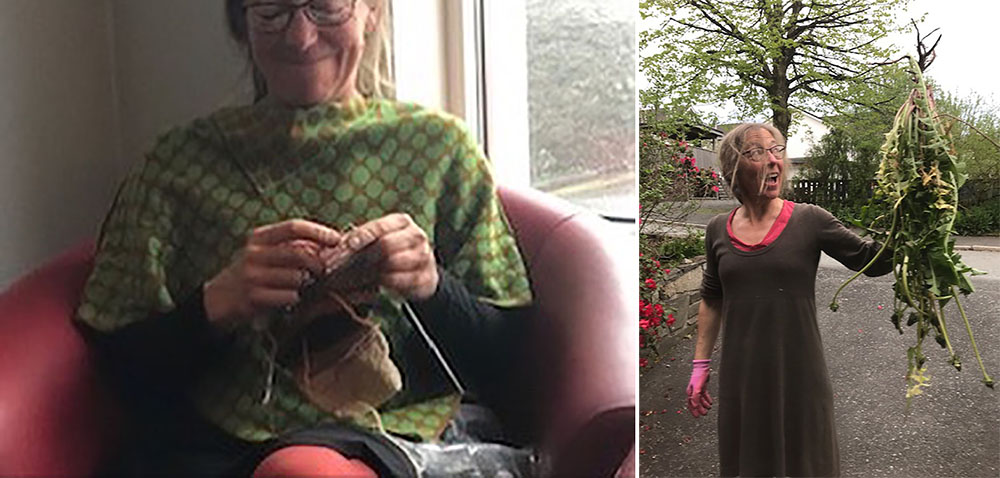
Sheep on the Map
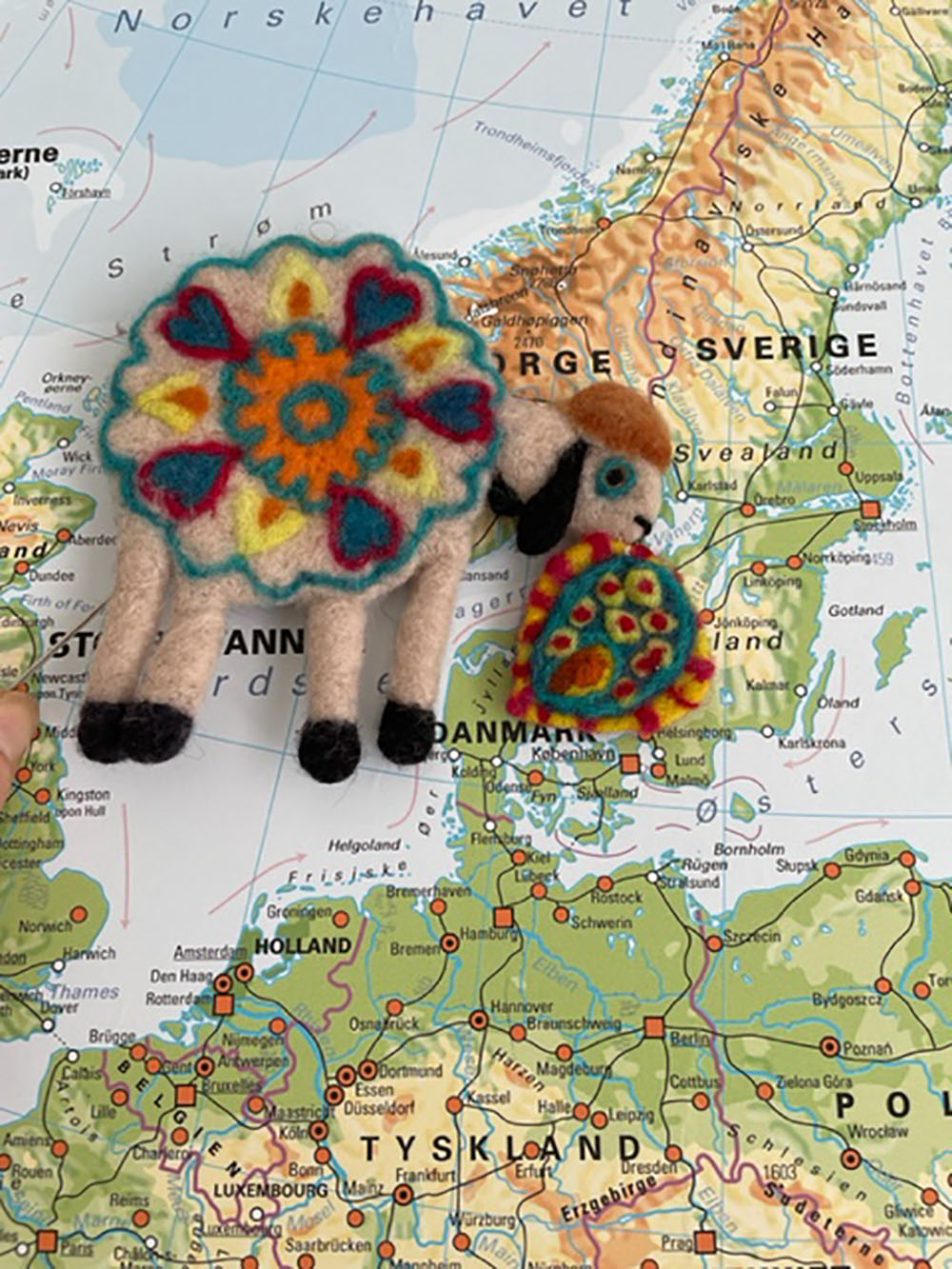
After Covid travel restrictions, Artisan Development Program alumnus Elise Kyllo is travelling in Scandinavia, communing with Shetland sheep, and connecting with wool workers in that part of the world. She writes about some of her experiences in her latest blog post.
 How fitting that on my way to Denmark, I stopped in North Carolina to teach felting for a week at John C Campbell Folk School. This school, like North House Folk School, was modeled after the folk schools of Denmark. I know that folk schools in Scandinavia are quite different from U. S. folk schools, but I am sure the mission is the same: to be inspiring, enlightening, non-competitive, community building, transformational, and a source of awakening. Sounds like a place that I want to be!
How fitting that on my way to Denmark, I stopped in North Carolina to teach felting for a week at John C Campbell Folk School. This school, like North House Folk School, was modeled after the folk schools of Denmark. I know that folk schools in Scandinavia are quite different from U. S. folk schools, but I am sure the mission is the same: to be inspiring, enlightening, non-competitive, community building, transformational, and a source of awakening. Sounds like a place that I want to be!
But WAIT!!! Here I am in Scandinavia for 6 weeks studying felting and fiber traditions and I am literally living the mission statement, every day feeling inspired, enlightened, and awakened! With immense gratitude to the North House Folk School Artist Development Program, I am finishing my 2 plus years with a grand finale of making real connections (not just on a computer screen!) with people and communities in Scandinavia. I’m absorbing the rich history of textiles and experiencing its evolution into the present and future.
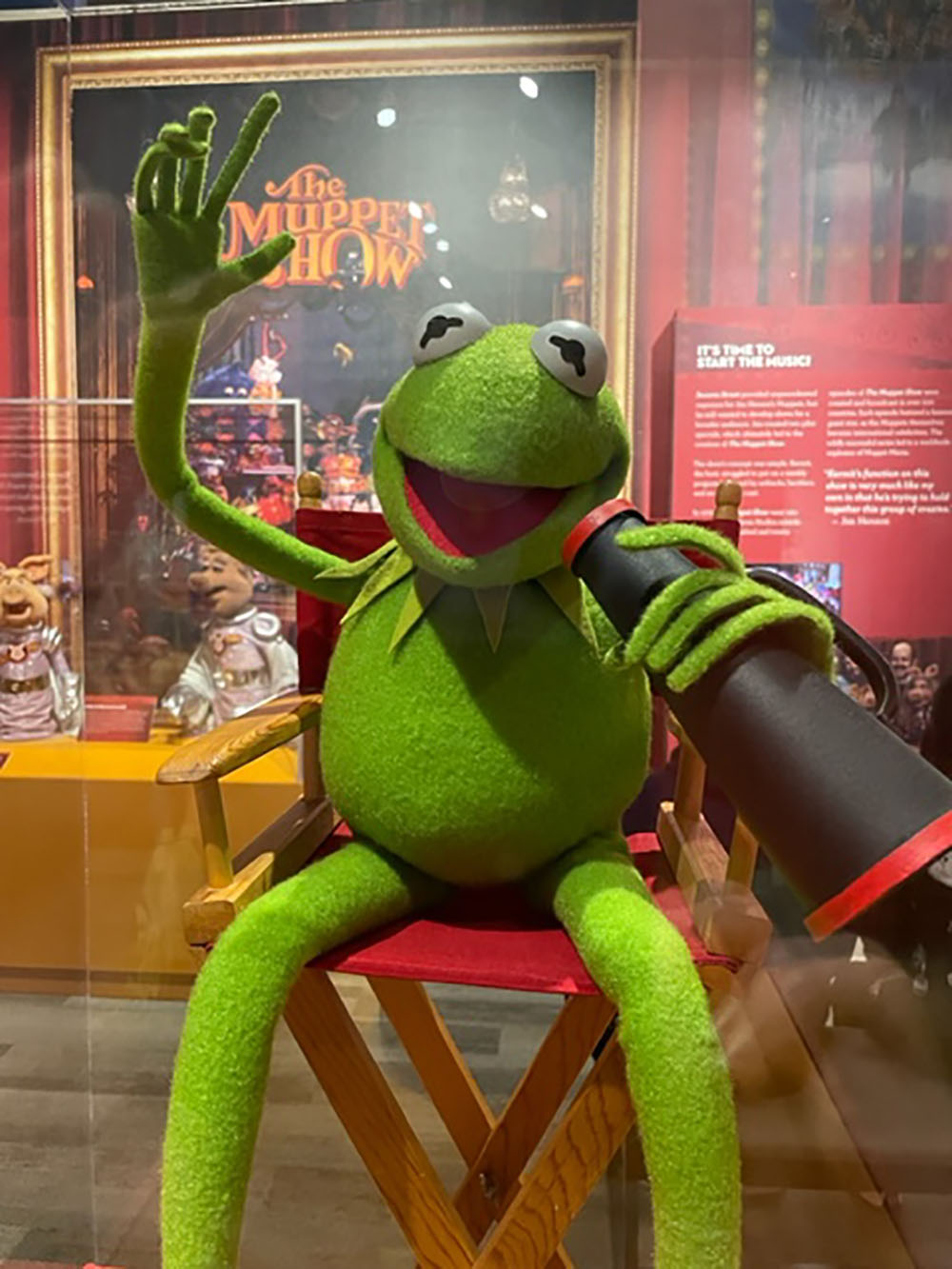
To begin my trip, I took a detour to the Puppetry Arts Museum in Atlanta Georgia, seeking travel advice from one of my favorite felt characters, Kermit the Frog. His sage advice was to seek four footed woolly friends because they don't talk politics and their pleasures are simple; sun, rain, enough to eat, and a beautiful place to roam. Having spent most of my first 9 days in cities I haven't had the pleasure of communing with sheep, but I am very lucky to have been embraced by many people who are content to focus on what brings us together, wool, working with our hands and simple pleasures.
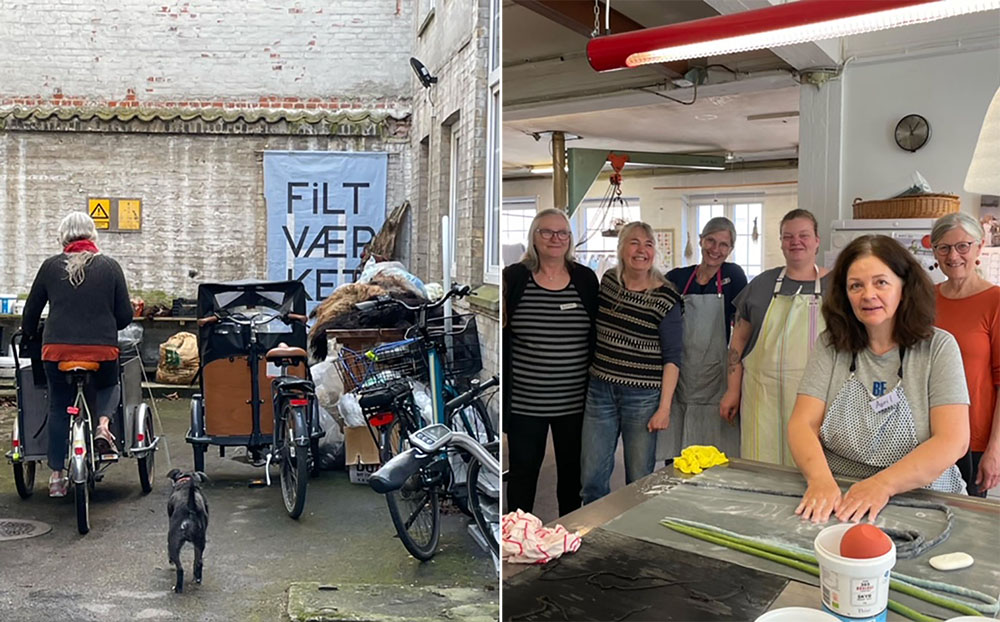
My first week in Scandinavia was spent with Mette Ostman and her work partner Line, both incredibly warm and talented women who live and share a studio in Odense, about 75 minutes outside of Copenhagen. Mette has created a unique situation where she employs near a dozen people to work with her in the felting studio. Having been a teacher for many years and a social person, it was a natural, perhaps necessary, evolution of her felt work to be done within an engaged community. Everyone that works at the studio called Filtwerk, has learned the craft under Mette’s guidance. There is a social, calm, and cozy feeling to the studio. The coffee pot is always on and the wet felting table, which is the main gathering place, is in the middle of the kitchen.
Mette would say that the group as a whole is her first priority. As a visitor, you might think the focus is on the felted work because everything that comes from the studio is finely, beautifully crafted. She greets each person with warmth and the gift of responsibility to accomplish their part in the studio puzzle. It's a complex flowing anagram with numerous felting projects beginning and ending throughout the day which only Mette understands and manages so gracefully. Making felt and selling the work is important and it helps to pay the rent and the employees, but it is not the focus. Thanks to the Danish system, her employees are partly employed by the state, making this working relationship about community and health, not productivity and profit.
Like so many things in Denmark that are beautifully sensible and driven by the social health of the country, I can only dream about something like this existing in the states.
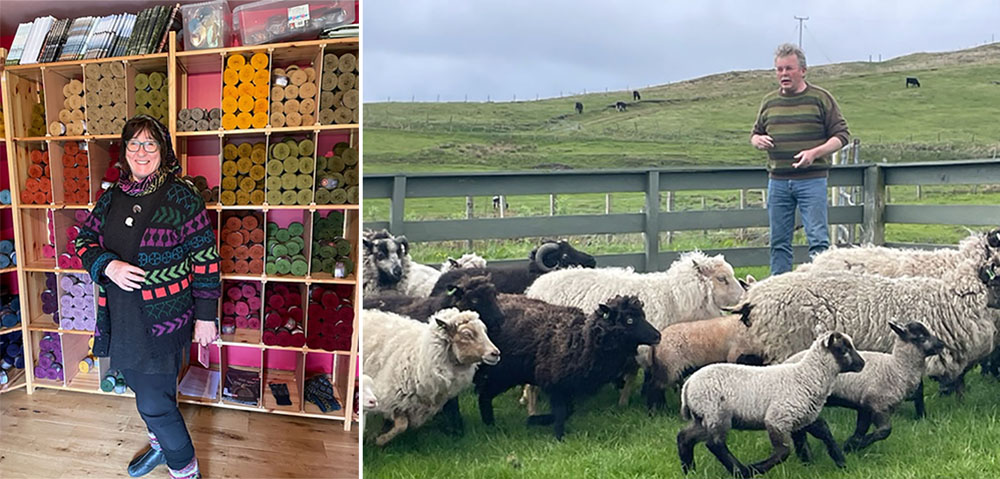 Karin Flatøy Svarstad at Uradale Yarn in Shetland. Ronnie Uradale, the owner of Uradale Yarn.
Karin Flatøy Svarstad at Uradale Yarn in Shetland. Ronnie Uradale, the owner of Uradale Yarn.
Nearly three years ago when I was just beginning my Artist Development Program, I was lucky to be a classroom assistant at North House for Karin Flatøy Svarstad. A Norwegian woman who is passionate about all things wool, from the genetics of sheep, the economics of wool, wool history, and its sustainable future. Nearly three years ago, I began dreaming of a trip to Norway to spend time with Karin. When I was finally able to travel after covid limits, she would be leading a group of Norwegians on a fiber, knitting, and history tour in Shetland. Lucky for me after being in many cities during my first two weeks of traveling in Scandinavia, I found myself on the quiet, rural, sheep-covered islands of Shetland, just a hop west from Norway. It’s been an incredible tour focused on the history of sheep, textiles, and the ties between Shetland and Norway. She has been leading this tour for 23 years, connecting Norwegian fiber lovers with a land once controlled by Norway and still grazed by a breed of sheep that was brought here by the Vikings. This rare breed of sheep is called Villsau, or short tailed sheep. They are well adapted to the landscape and climate, needing no extra feeding or attention, even through the winter. This solid, intelligent breed can survive on it’s own, eating seaweed if needed. The Villsau breed is dwindling in numbers unfortunately, due to the preferred larger, meatier breeds. Like potatoes, corn, and so many other things of our monoculture world, these rare breeds are in trouble.
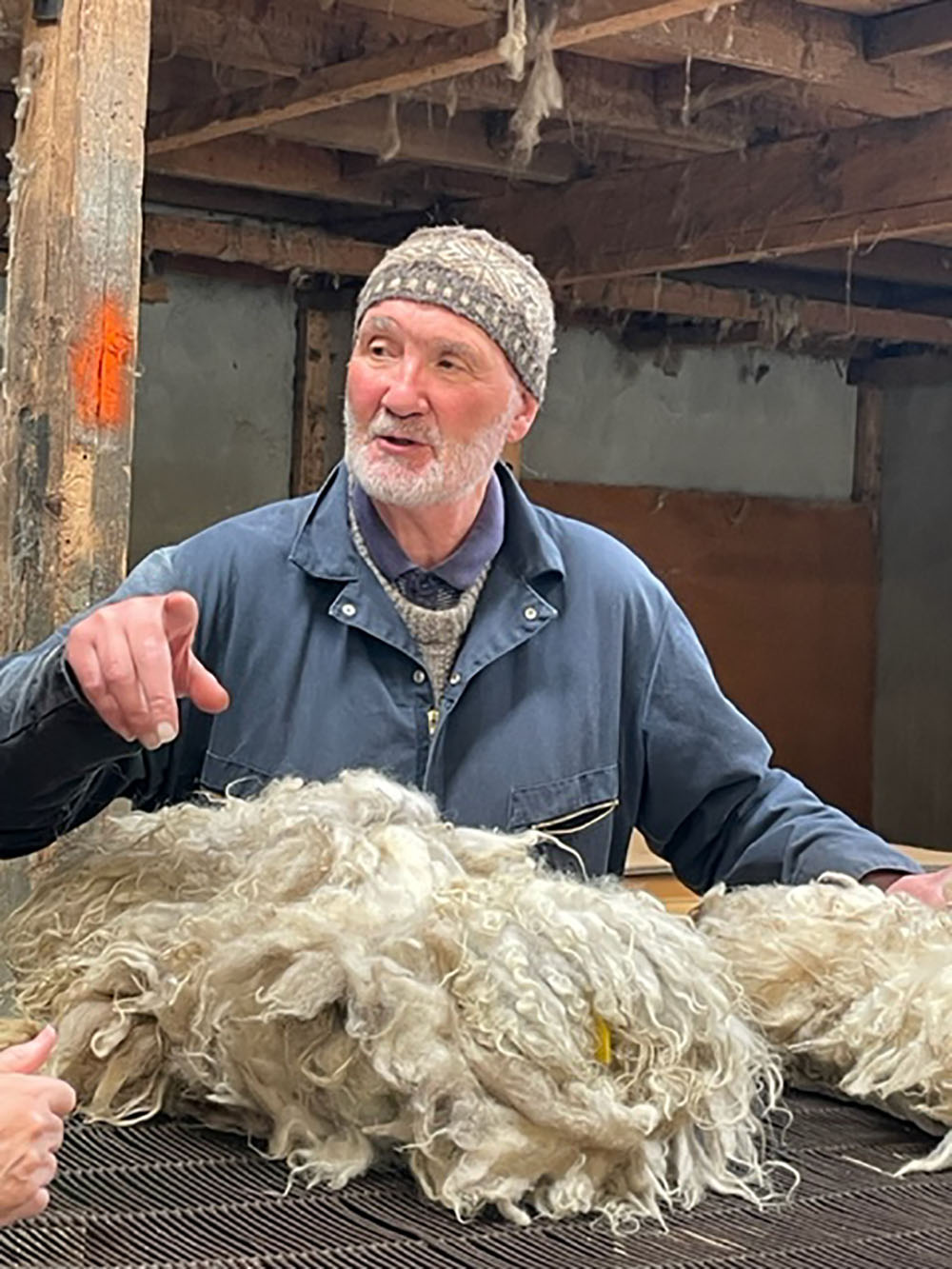
Oliver the wool grader at Jamieson and Smith, wool broker in Shetland
Karin leads a unique tour that has connects the group with local farmers, craftspeople, small businesses, musicians, artisans, community meals, and many historical places. Everywhere we went, there was an open door with a warm greeting, usually followed by coffee/tea and cakes. There are so many stories from the week, I fear I can’t even begin to tell the tale. As I write this, I can hear my mind go into a Shetland brough. It happens quickly! Being surrounded by knitters, I couldn’t help pick up knitting and learn to really love it. I’d like to say that I while in Shetland I learned to spin and knit from a bunch of Norwegians, using Shetland wool. Not only was knitting a pleasure but it was a necessary sanity activity that I used frequently. As the tour was in Norwegian and I understood very little, I was able to calm the frustrating feeling of missing out, by taking up my knitting and floating away into my ball of yarn and needles. I think about women through the centuries who have found a calm place in knitting. A place where they could make something useful and beautiful. Perhaps they could earn their own wages by selling their knit wears and find a sense of independence and autonomy. Perhaps they join a knitting circle where they could share tea and conversation.

Learning to spin at textile museum with Maureen
I definitely prefer felting and love what can be made with wool just through agitation and water, but now I can also say I am a beginner knitter and spinner and have joined a new community of people around the world. From my week with a group of knitting Norwegians, I can say they are a wonderfully warm and fun group of people!
As I expected, felting is historically invisible and maybe was never done in Denmark, like Estonia, Shetland, and many other places. I vaguely hoped to find examples of felting history in museums, but after 3 countries and visiting many museums I have only seen one felted item, in Shetland. A brown felted wool hat made around 1600. Felting is my main interest in working with fiber and I will unlikely find much history in my travels, but there is no shortage of inspiration and intrigue as I absorb all I can about the history of textiles, the relationship of people to the land and sheep, the role of women and textiles and meeting so many talented crafts people who are working with wool.
I can’t thank Mette Ostman and Karin Flatoy Svarstad for their wonderful mentorship and being such gracious hosts and guides! There are also so many others who have showed me around towns, met me for coffee, shared their work, led me when I was lost, and shared their kitchens and gardens. I am so lucky and so thankful!
You can find me on Instagram, @EliseKyllo, if you’d like to follow my travels and see more photos.
